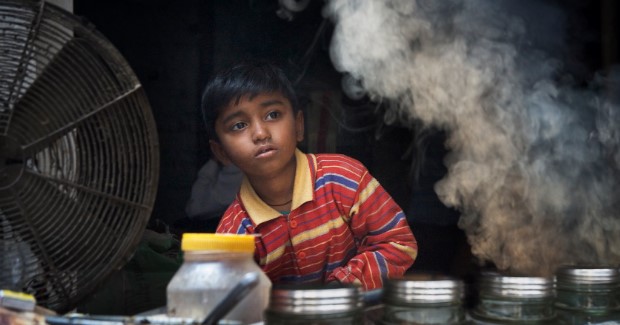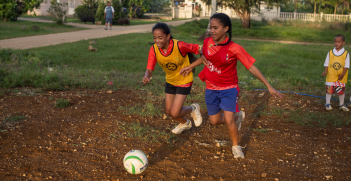New Legislation on Child Labour in India

Shortly before World Day Against Trafficking in Persons on 30 July, the Indian government passed legislation helping to strengthen India’s ongoing fight against the exploitation of children. However, there are concerns that it leaves loopholes for child slavery to continue.
On 19 July, the Indian government passed the Child Labour (Prohibition and Regulation) Amendment Act, 2012. The Act amends the 30-year-old Child Labour Act and strengthens India’s fight against child labour and modern slavery.
Under the amendment, certain anomalies which contravened international standards have been addressed. Employment of all children under the age of 14, apart from those who are employed by family members after school hours, is now prohibited. This strengthens the original Act, which only prohibited employment of children under 14 years of age in 18 specified hazardous industries. Stricter penalties are also enacted for those found guilty of illegally employing children, while the government is empowered to regularly inspect those businesses that may have contravened the new legislation.
These are welcome improvements in a country where many children are exploited for their labour, and where, according to the Global Slavery Index, some 18.3 million people, including children, are in modern slavery. In India, cases have been reported where children experience domestic servitude, forced begging and commercial sexual exploitation, or are forced to labour in the construction, agriculture, fishing and manufacturing industries.
While the Child Labour (Prohibition and Regulation) Amendment Act, 2012 is aimed at all forms of child labour, of which only a small proportion would be classified as slavery, the Act will go some way to address some of these more exploitative forms of child labour. The Act prohibits those aged 14 to 18 working in the most hazardous occupations such as mining, working with inflammable substances and hazardous processes. The Act also prohibits employment of children and adolescents in industries where children are particularly vulnerable to modern slavery—domestic work, mining and hospitality.
Despite the strengths of the new legislation, some reservations remain. The law does not apply to those family members who employ children after school hours or during school holidays. In particular, the Act allows for the employment of children in fields or other forms of agricultural work, where high rates of child exploitation can occur or where the use of pesticides and the risks of accidents with tools and machinery can make work dangerous. The terms of the Act state that the first violation by parents and guardians will go unpunished, while repeated offences would be punished with a smaller fine of 10,000 Rupees, or approximately US$150. In a country where it is sometimes difficult to establish who is or is not part of the family network, a significant loophole therefore exists where “uncles” employing children could be excluded from investigation and prosecution.
The Indian government’s response is that any legislation in India must respect the socioeconomic reality of many families where the work of children boosts the family income, or provides the child with the opportunity to learn the family trade from an early age. This is legitimate; not all child labour is bad, while any work that does not interfere with the health of the child, or prevent them from attending school, can be seen to have a positive impact on personal development and family welfare. However, the fact remains that some children could fall through the gaps where the exploitation occurs within the family unit.
The amendment to the Child Labour Act, if implemented fully, is a welcome addition to the Indian government’s fight against child labour. The Walk Free Foundation supports this initiative, but would like to see more robust mechanisms to ensure the legislation achieves its aim to eradicate all child labour, which endangers the health of children and prevents them from attending school.
Katharine Bryant is research manager at the Walk Free Foundation and author of the Global Slavery Index. She oversees the qualitative research program, including the government response component of the GSI. She has worked in counter trafficking and anti-slavery programming and research for seven years. This article is published under a Creative Commons Licence and may be republished with attribution.





